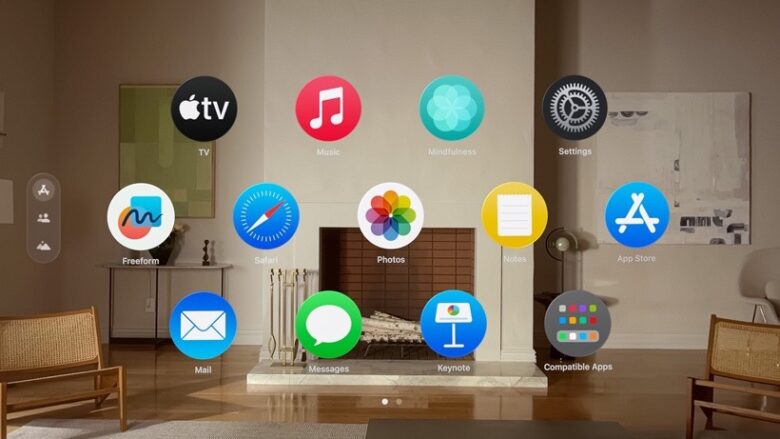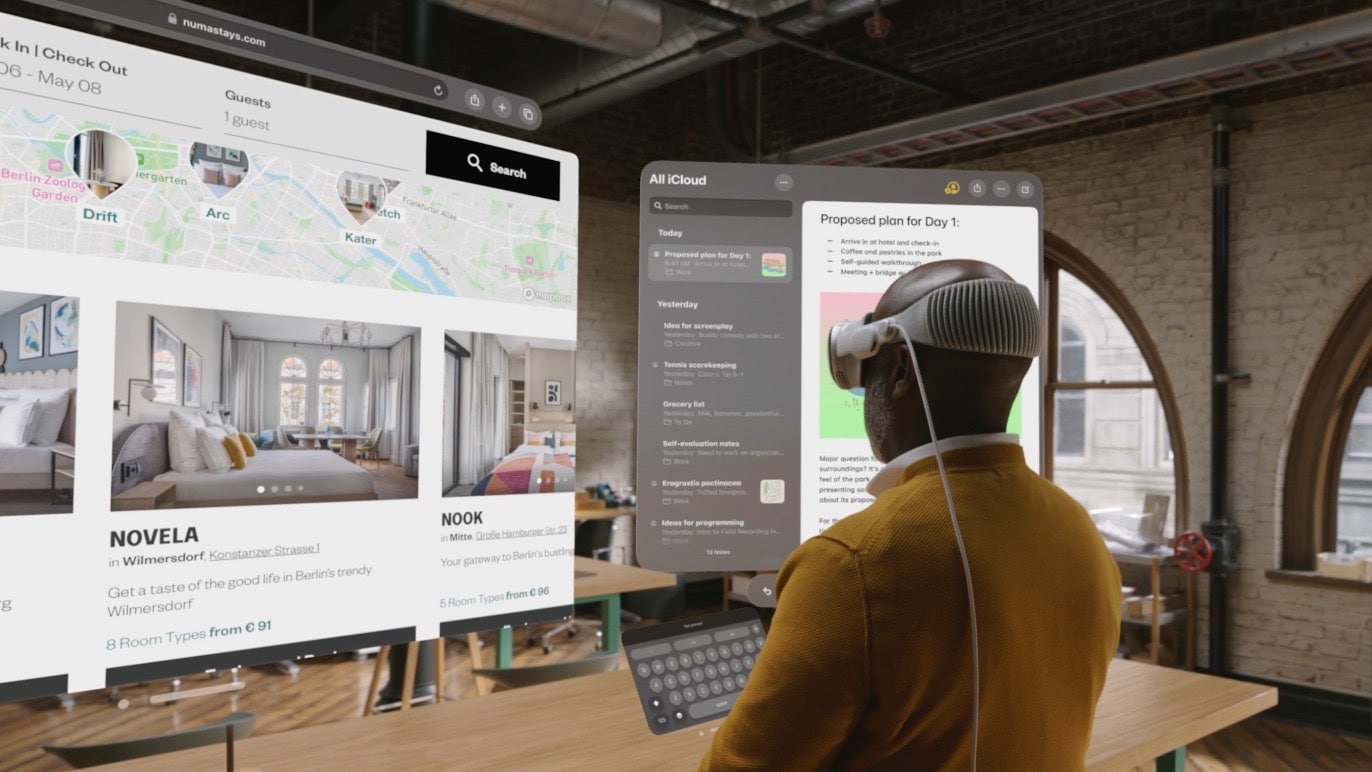While Apple is encouraging developers to write software for the Vision Pro AR headset, there are some types of applications it doesn’t want. Camera-related apps and movement-based ones can’t be made.
Some of the restrictions don’t seem to be about privacy but instead result from limitations in the hardware. Others are a mystery.
Third-party Vision Pro apps can’t use the cameras
The headset is Apple’s latest foray into augmented reality, and at $3,500 is a bit of a gamble for the company. Although Apple gushes that, “Vision Pro creates an infinite canvas for apps,” that canvas actually has limitations.
Documentation that accompanies the just-released visionOS SDK encourages developers to port their iPad and iPhone applications to the AR headset. But it also has a list that starts with, “Don’t port the following types of apps.”
On the list are selfie and photography applications. These are ones that their “primary purpose is to capture images or video from the device’s cameras,” according to Apple.
For obvious reasons, it’s not possible to take a selfie with Vision Pro — the device is strapped to the user’s face.
But it does have front-facing cameras that are more sophisticated than are in any iPhone or iPad. So it might be easy to think that forbidding developers from using these is about privacy: many people objected to the camera built into the Google Glass AR headset a decade ago.
But Apple’s AR headset can capture 3D images. “Vision Pro is Apple’s first 3D camera. You can capture magical spatial photos and spatial videos in 3D,” notes the Mac-maker. So it’s not clear why third-party devs can’t make camera applications.
No movement-based apps
Also on the Do Not Port list are movement-based applications. These are “apps that follow a person’s location changes, such as apps that offer turn-by-turn directions or navigation,” according to Apple documentation.
Unlike iPhone, Vision Pro doesn’t support location services except the standard one. And it has limited or no access to accelerometers and gyroscopes, the pedometer, magnetometer and barometer.
A ban on navigation app is somewhat surprising, as turn-by-turn directions are one of the features people most want an Apple headset to provide. Perhaps greater support for navigation services will be added in later hardware versions that are lighter and more portable.
The no-go list also includes “apps that track body movements,” another odd limitation. The AR headset can undoubtedly track body movements. In fact, interacting with the device via hand gestures is a signature feature.

Photo: Apple
Other limitations on Vision Pro apps
The third category of applications Apple says developers shouldn’t port to visionOS are ones that act as containers for app extensions. These would make little sense on an AR headset, as they include “apps where the primary purpose is to deliver custom keyboard extensions, device drivers, sticker packs, SMS and MMS message filtering extensions, call directory extensions, or widgets,” according to Apple.
visionOS applications will go into the App Store, so Apple doesn’t have to spell out every type of software that’s forbidden for Vision Pro because these apps are already banned by the App Store Review Guidelines.
Most notably, that means no 3D porn. The guidelines forbid “overtly sexual or pornographic material” for iOS, iPadOS and now visionOS applications. There are also stringent rules on gambling.



